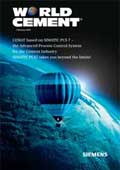Editorial comment
China’s biggest annual festival, the Chinese New Year, has just been celebrated. It is a time during which, traditionally, loved ones and families exchange red envelopes stuffed with money, but this year the envelopes might not have contained as much money as previously.
Register for free »
Get started now for absolutely FREE, no credit card required.
China’s biggest annual festival, the Chinese New Year, has just been celebrated. It is a time during which, traditionally, loved ones and families exchange red envelopes stuffed with money, but this year the envelopes might not have contained as much money as previously. In Chinese culture, it is the ‘year of the ox,’ an animal that is strong and capable of carrying out heavy work as well as providing meat. ‘Year of the Ox looking very un-bullish’, reads the headline in a recent issue of the International Herald Tribune, an indication that China’s economy is suffering and is not exempt from what’s happening elsewhere in the world. It does not seem that long ago that we were reporting on China’s apparently unstoppable industrial growth, especially in the cement industry. In 2007, China was said to have overtaken Germany in becoming the world’s third biggest economy, and was on course to become the world’s biggest exporter. A sudden fall in exports towards the end of last year, in fact down about 3% on the same period in the previous year, and a slump in imports (reported to be down by 21% to the end of December 2008), stymies that assumption. One economist is predicting that exports in the first quarter of this year could be 19% lower than 12 months ago.
Other pundits are suggesting that China’s growth rate will be about 5 to 6% this year, the lowest since about 1987. Domestic demand has weakened and the country has not been buying from the rest of the world as it did in the heady days of 2006 and 2007. An important issue has been the dramatic fall in housing construction, a result of the government’s determination to prevent the overheating scenario that affected the housing markets in the US, UK and Europe before the financial crash last year. China’s heavy industries, such as steel and cement, were drastically hit last year following the slump in the construction market. While all this makes for depressing reading, the Chinese government has indicated that by the middle of the year there will be huge increase in infrastructure spending, funded partly by the government and partly by the banks (they have money?). That being the case, one can expect to see a rise in raw materials imports. Exports, however, are predicted to continue to slide and any talk of China becoming the world’s biggest exporter are premature. During the first week of 2009, the Irish-based international building materials group, CRH, announced that it had completed its acquisition of a 26% shareholding in the Jilin Yatai Group’s cement operations. Yatai Cement operates four integrated cement plants and four separate grinding stations in Jilin and Heilongjiang in northeastern China. A major investment programme is expected to be completed towards the end of this year when the cement capacity will increase to 18 million t. Yatai is one of the top ten cement suppliers in the country. CRH will be pleased with this investment and especially so when the country’s cement industry picks up again.
So what of other emerging markets at this time? The picture is mixed. Eastern and Central Europe (even before the gas lines were shut down) are suffering. Debts in Hungary and Ukraine are such that the two countries had to call in the International Monetary Fund for a rescue package, while the currencies in Russia, Poland and the Czech Republic have fallen by about 12%. So far, it does not look so gloomy in Latin America and in the Asian markets, while it remains to be seen how the Middle East will fare in the light of falling oil prices. When the financial markets return to some sort of sanity, it could be that it will be the emerging markets that lead the way out of the financial gloom. But why are we writing about all this here? You can get far more information by ordering our new publication, Emerging Markets Report 2009. Just turn to page 36 or visit www.worldcement.com for more details.


